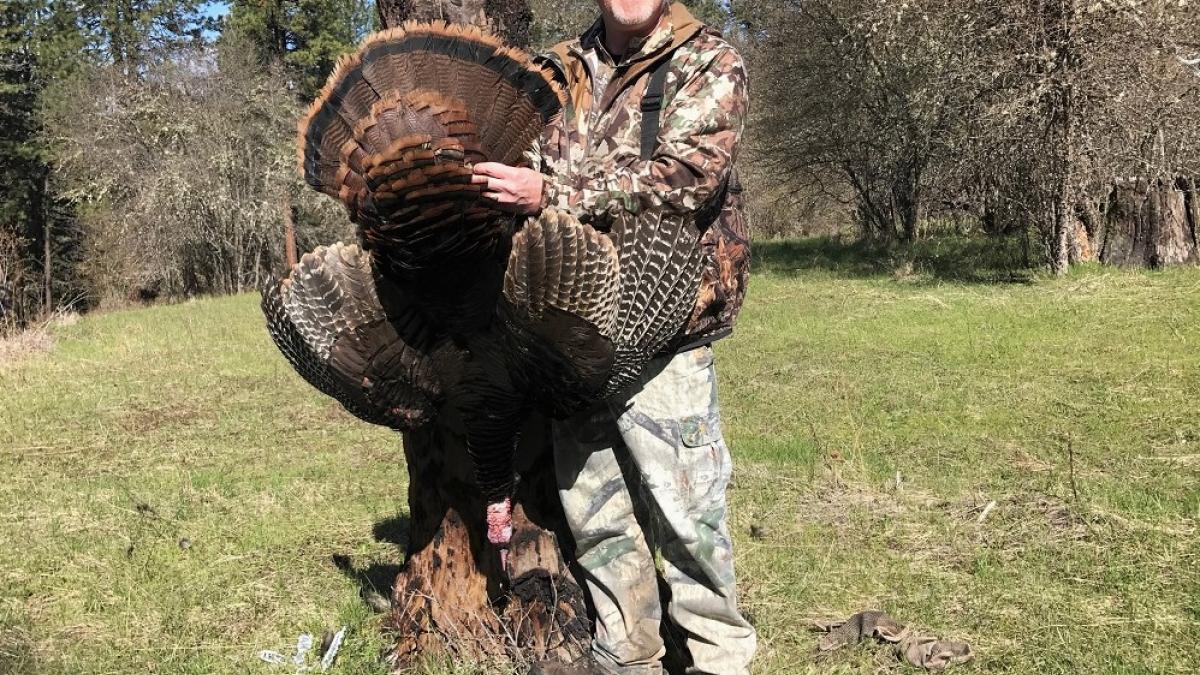
Strategies for Hunting Public Land Turkeys
By Eric Crawford
Over the years I’ve developed a love-hate relationship with ol’ Tommy long beard, especially when it comes to hunting them on public land. It boggles my mind how an animal with a brain the size of a pea can be so wary and cunning. But with time I’ve learned that it isn’t always their smarts that out maneuver me but my own mistakes and at times out right stupidity.
I grew up hunting the spring hardwoods of the Northeast where a gobble would echo and reverberate for what seemed like miles in the early spring. Mistakes were always made and lessons should have been learned in those early days. But over the years with enough failures I like to think I’ve learned a few things.
Now, I primarily hunt turkey’s in the dense north woods of Idaho on public land. But having hunted turkey’s in the east and the west, even though turkey’s in the west have vast amounts of public land to roam, I use the same techniques I learned growing up in Pennsylvania on the vast public lands out west.
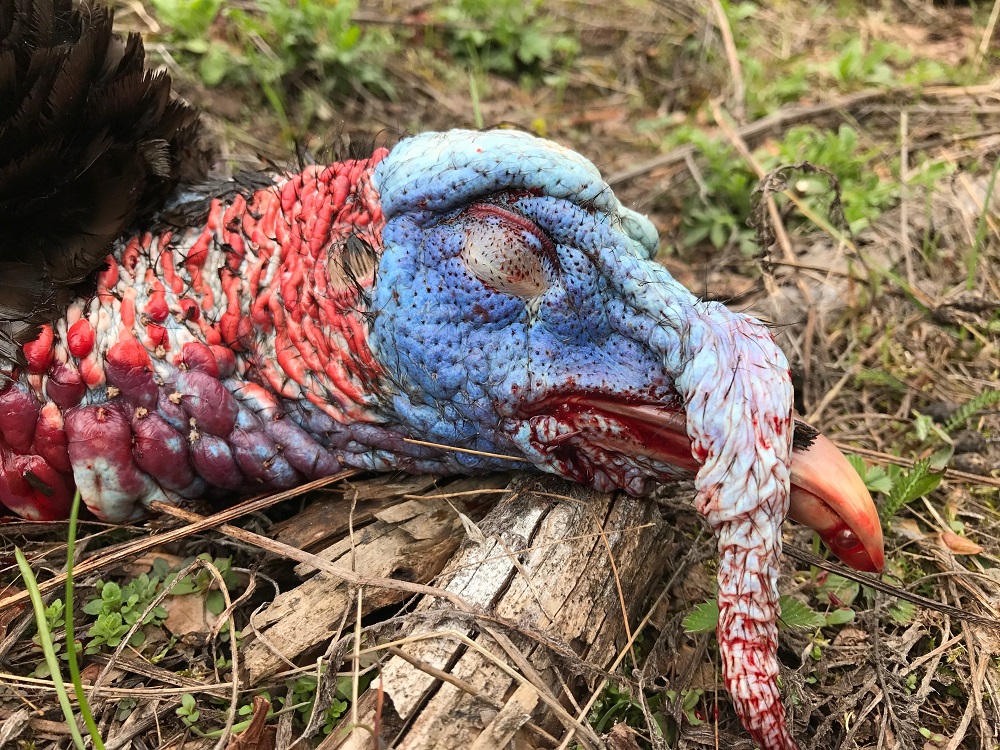
Picking the Right Turkey Call
Little has changed over time when it comes to turkey calls and on any given day one call may work better than another for reasons only turkey's will understand. Although I rely on the diaphragm as my primary call, I carry a box call, a slate call and a push button yelper.
My box call was made by my father in-law with red cedar. It has a higher pitch than most like, but it can reach out a long ways and help locate a bird. The slate call is more nostalgia than anything, but occasionally I’ll pull it out later in the morning for a softer tone to call those lonely toms in. The yelper too was made by my father in-law and I carry it around mostly for good luck.
Each of the above-mentioned calls has its' place, and I use them all at different times. Sometimes a Tom will respond to one call over another, and I have yet to figure out why. Also, some are a lot easier to use than others and it's important to pick a call you feel comfortable with. For the beginner turkey hunter, a push button yelper is probably the easiest. With just the curl of the finger a yelp can be produced and a cadence developed that most gobblers will respond to.
The slate call and box call are more for the intermediate caller. The slate needs to be tuned to produce the right sounds, which can be accomplished by roughing up the surface with course sandpaper. And, the striker usually needs to be altered as well, by burning the tip to create a hard, polished surface to produce the right sound when it strikes the slate.
Box calls are useful and fairly easy to learn with a little practice. The trick is figuring out your rhythm and the amount of pressure. The amount of pressure exerted on the striker arm will increase the volume, coupled with the length of the draw to produce a cluck, yelp or purr from the box.
Last but not least there is the diaphragm turkey call (There are a lot of different brands out there, but the Phelp's game calls diaphragm calls are a great option and what I use). The diaphragm is for the more experienced caller and requires some work to produce consistent calls, but is ideal because it allows for hands-free calling. I still prefer the diaphragm, but if you’re going to use a diaphragm you’ll need to practice.
This video has some great techniques for using a diaphragm call for turkey hunting. Not to mention, the guy in the video is amazing.
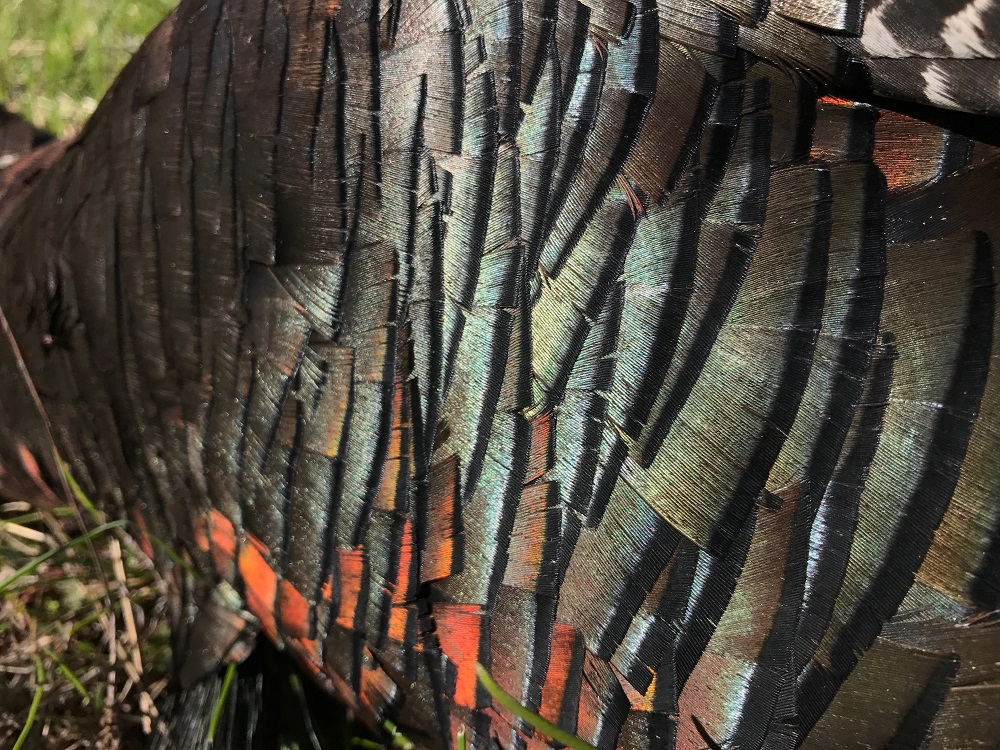
Turkey Calling Strategies
Figuring out what calls to make, how often to call and how loud to call is the art of turkey hunting.
If you set up close to or under a roosting Tom in the early morning (I cover this strategy more below), you will want to use soft intermittent yelps. Think about how you feel when first waking up. You aren’t all fired up and neither are the turkeys. I’ve always tried to stay consistent with the use of soft yelps while birds are on the roost. I will admit though there have been times that I’ve got as excited as the gobbler strutting on a limb and lost my mind calling too aggressively only to have the gobbler fly down in another direction.
Remember the goal of calling is to mimic a real hen turkey. This video of hen turkey's calling in the wild is a great watch to get a sense of how hens sound in the wild when they are calling during the turkey rut.
There are times when I do call aggressively when the birds are still in the roost, especially when I have an aggressive hen calling back. My plan in this situation is to call the hen in. My working theory being a live decoy works better than a fake one.
Once the birds come off the roost and hit the ground I’ll try to get a little aggressive, always mindful of the gobbler’s barometer of love. If it seems the bird is interested in my calling I try to keep that interest going, but it is a game to try and get inside the head of the Tom and gauge how interested in mating he is.

If the bird is clearly worked up I distance more time between my calling, particularly if the gobbler is getting close. I feel like this really draws them in by playing hard to get. Other times I string out a series of yelps and cut into a cackle. The gobblers general respond to this sequence of calls but it almost always crosses that line of being a little to aggressive, making the Tom’s think the hen I’m imitating is going to come to them.
If there is one lesson I've learned with turkey hunting, it is that most people over call to Tom's. Keep that in mind if you have a Tom that is gobbling to you. Call, but don't let your excitement get the better of you.
These are just some of the sequences that have worked for me over the years and usually just like humans the talk of love varies among individuals. Play around with different calls and sequences and take note of what works, and what doesn't.
Public Land Turkey Hunting Strategies
When I first moved to Idaho 20 years ago I was surprised to learn there were turkeys here. Back then we had controlled hunts and very limited hunting opportunity. What I found though was that these birds acted just like there eastern counterparts and I employed the same techniques as I used in the eastern hardwoods.
Hunting Turkey's off the Roost
This is a very popular way to hunt turkey's, and one of my favorites. Once on the roost Tom’s will generally sound off with gobbles, letting me know where to be in the morning. In the evening I try to be somewhere that gives me a decent range to listen for roosting birds. I’ve found it important to note as precisely as possible and determine which tree they are roosted in. There have been times when I didn’t pay as much attention as I should have the night before only to walk right under the roost tree, spooking the birds and ruining a morning hunt.
In the mornings I generally get to the area well before daylight to listen from a safe distance and reconfirm which tree the birds are roosted in and then make a plan, aiming to set up a couple hundred yards from the roost tree to be safe. As the birds begin to wake up they’ll begin to call more and more. At times you’ll hear other hens calling getting the birds worked up and other times the gobblers alone will get themselves worked up. Either way I try to do some soft intermittent calling at this time.
Experience has taught me that too much calling to birds on the roost seems to be a lose-lose situation. You’ll generally hear the birds come off the roost; with wing beats and a quieter gobble once they hit the ground. I’ve found this to be the make or break moment of truth, they either like your talk or they already have a date with a hen in the other direction. You can improve your chances by positioning yourself between the gobblers and hens when they are on the roost. But your taking a significant risk of busting the birds off the roost or being seen.
With 30 years of turkey hunting I’ve learned sometimes you’re a winner and sometimes you’re a loser. Even with a well thought out plan, the turkeys still have their minds made up and a schedule of sorts to keep. Long ago in the northeastern hardwoods my high school buddies and I would hunt this area we called the A-frames and over the years we learned the birds had a routine. Once off the roost the birds would go a half mile to an old field to strut, one that we didn’t have permission on. After that they would move another half mile through open hardwoods to the "Donut", feeding on acorns and beech nuts.
By late morning the hens would head to their nests and the gobblers would come to a meadow created by a pump house to strut again. It took several years before we realized what was going on and consistently started killing birds. Sometimes you can interrupt the routine of turkeys, but more times than not it’s better to learn to work around it.
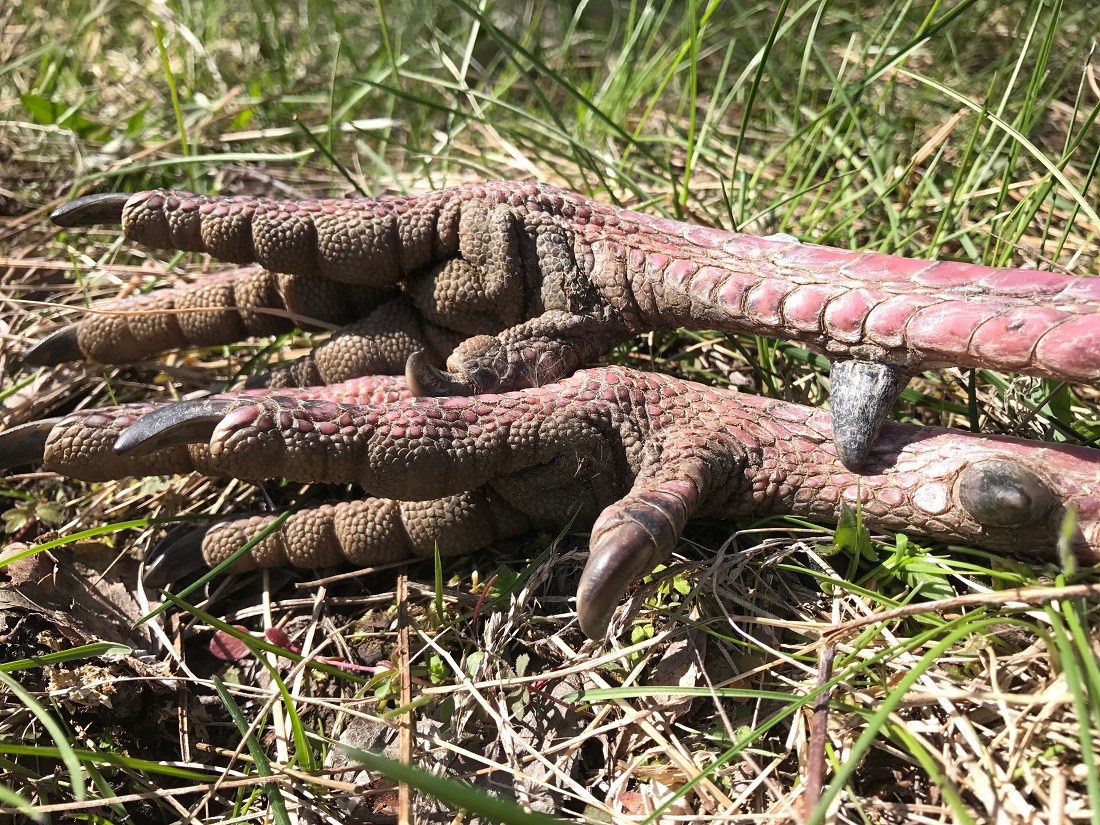
The Brunch Technique
Hunting toms off the roost can be difficult when you are competing with a real hen turkey. In the early morning, toms will follow hens to their nests, and in the late morning they tend to wander around looking for more mating opportunities.
I’ve likely killed more birds after 10 am than I have at first light, making brunch time a great time to hunt for toms. It’s not a function of being lazy and not making it out at first light but rather getting turned down during that initial fly down. It isn’t uncommon for me to hunt first lite, strike out and head back to the truck for breakfast and then head back out into the woods late morning. It seems by the time I get back to the woods the gobblers are freely sounding off and are ready for their next date.
Last spring I wanted to introduce my two young children to spring turkey hunting. So rather than wear them out with an o’dark thirty wake up we had a leisure morning around the house, not arriving to our hunting spot until 10 o’clock. I made a hen call right out of the truck and in short time got a response. After a little back and forth with a couple of toms my daughter spotted the birds out at 100 yards. As the birds got closer my kids were able to watch the toms strut and gobble their heads off. As you know sometimes it’s better to be lucky than good, I was able to call the toms in to 25 yards for an easy shot and an awesome introduction to spring gobbler hunting for my kids all because we relied on the “brunch” hunt.
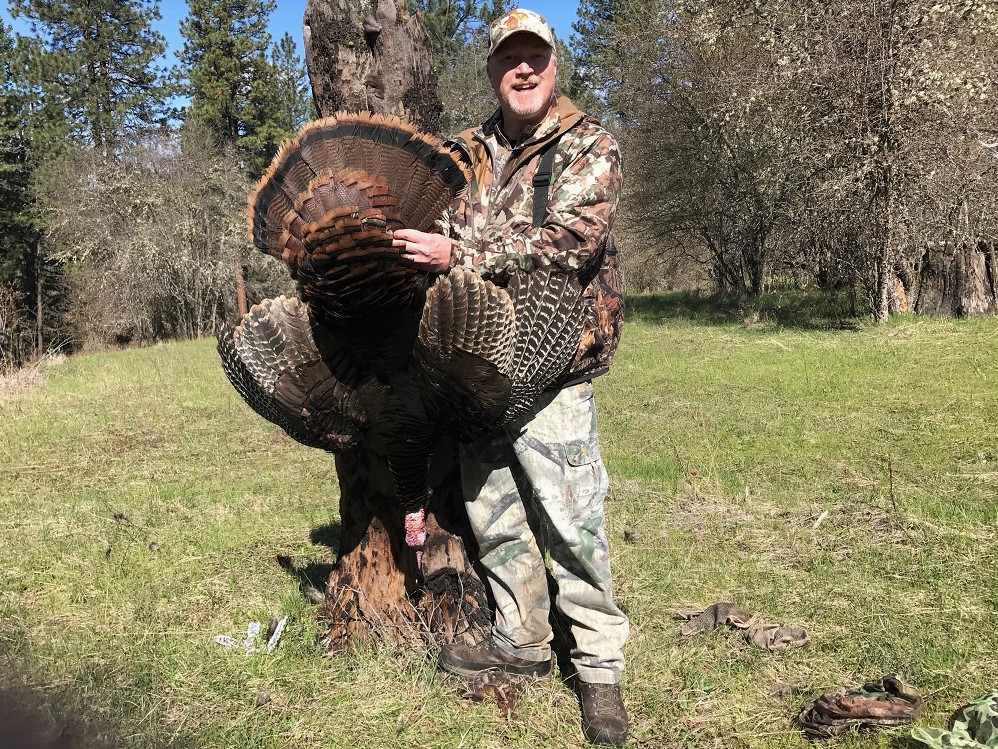
In northern Idaho where I do most of my turkey hunting I have the opportunity to hunt a variety of forest types, each adding a level of complexity and approach. Take for example the field edge, generally you’ll find the birds roosted on its very edge. Two springs ago I was hunting an area that was on a field edge and try as I may I could not get those birds to come my way. Earlier in the morning I heard birds over on the other edge of the field but never did see them enter the field to strut. What I learned, instead of using the wide open field like the other birds they found a small secluded meadow to do their dance. A couple of days later I came back and capitalized on that secluded meadow, calling in three toms.
Much like the field edge scenario you have the clear-cut. I’ve found birds in fairly remote areas utilizing clear-cuts by using the old skid roads as strutting runways. Last spring I decided to go into an area that I thought would hold birds but more so to explore and look for whitetail sheds. After a hike looking for sheds in some brushy timber I started to hear distant gobbling. Unbeknownst to me there were a series of clear-cuts downhill from me. As I scrambled down to the gobbling I came to an old grassy logging road only to bust a bird. Lucky for me that wasn’t the only bird gobbling and I was able to make several attempts on other birds.
What I learned is these birds were exclusively using these grassy logging roads but it became difficult moving from one to the other due to the thick brush that had grown in. The area was terraced with logging roads, separated by 250 yards of heavy brush. I just couldn’t consistently work from one old road bed to the next without making a ruckus. It wasn’t until I heard a bird across the drainage that I was able to capitalize on the existing roads and set up within easy calling distance, ultimately sealing the deal.
In both scenarios there is a common theme: open strutting areas. Tom's can strut nearly anywhere, but they prefer to have some space to dance.
Unlike many of their fellow wild beasts, turkeys don’t rely on their noses but rather their keen eyesight and hearing to keep alive. I’ve been busted more times than I care to remember trying to get a little closer for a set up by a wary tom. Even the slightest movement can send them into a putting panic, heading for the next drainage. Always use caution moving in the turkey woods. As for hearing, since they are a vocal bird their little ears are superior at picking up the subtle forest noises and those unfamiliar noises. Any noise that isn’t familiar to them will set them off into a putting run.
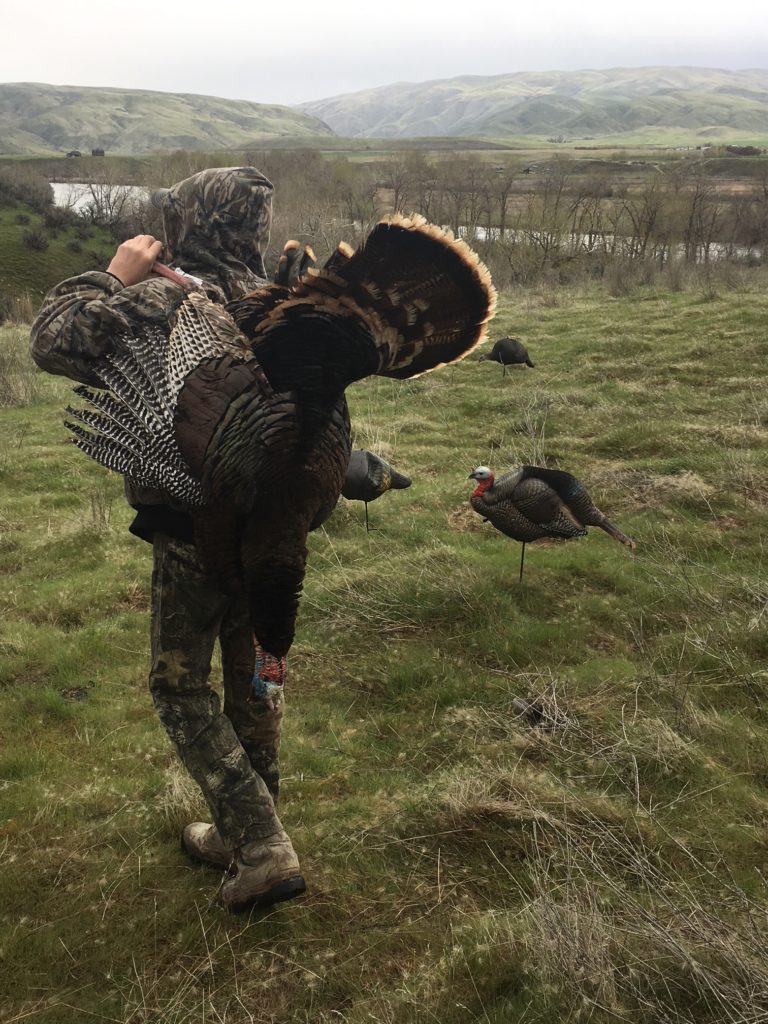
Finally, I’m a bit of purist when it comes to spring turkey hunting. I rely on my calling to get birds close, the closer the better. I’m a 25 yards or closer kind of guy. I still use a standard full choke for birds. For me, it’s not about filling a tag but about that awesome interaction and the feel of success after outsmarting a long beard. I love to watch them strut and listen to them drum up close, there’s just something about the reflection and refraction of light off their magnificent feathers that you don’t get when they’re 60 yards out and you’ve got an extended extra full choke in your gun. Or the thunderous gobble up close that seems to vibrate the ground and your body.
For another great resource on public lands turkey hunting, check out the article written by our friends over at MeatEater, and be sure to listen to the MeatEater Podcast episode on turkey's for a great educational resource.
So get out there; enjoy the spring woods with their strutting long beards, morels, shed antlers and more awaiting. Better yet, take a kid hunting with you. It just so happens that spring turkey hunting is probably one of the easiest things to do with a child; with success found in gobbles heard, it is pretty easy to find it.
If you have a favorite calling or public land turkey hunting strategy, share it in the comments below.
Eric Crawford is a hunter, angler, conservationist, protector of wild things and enjoys bland coffee at room temperature